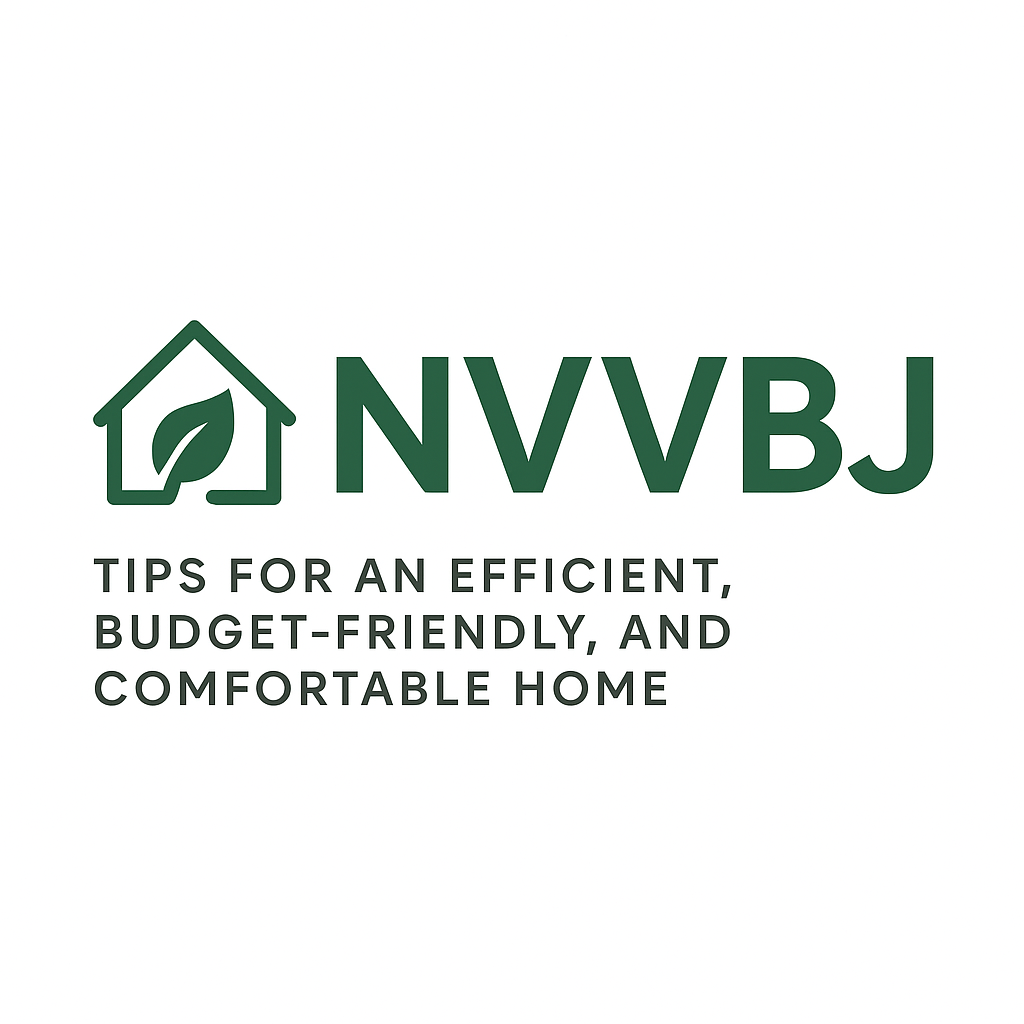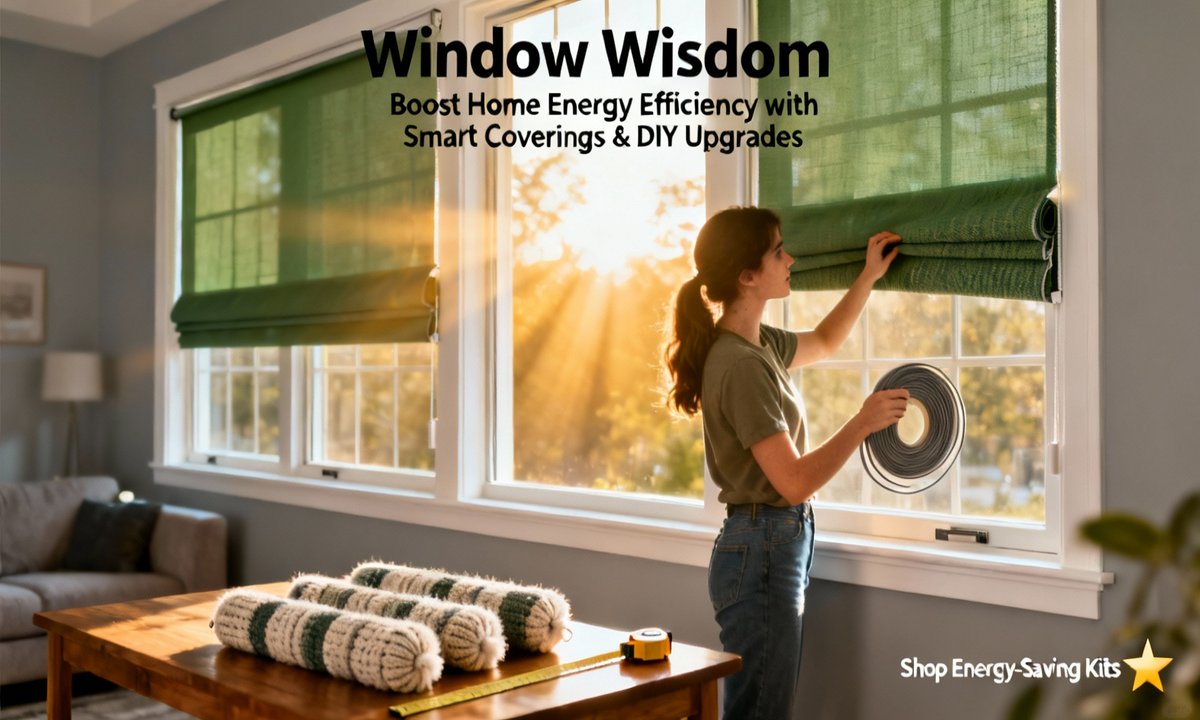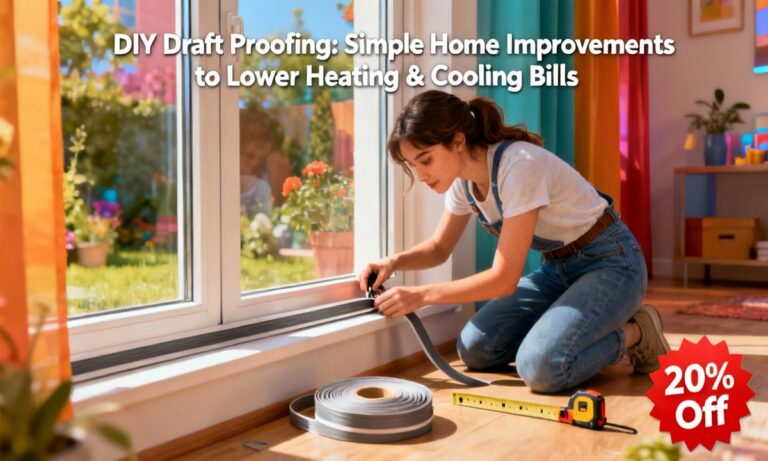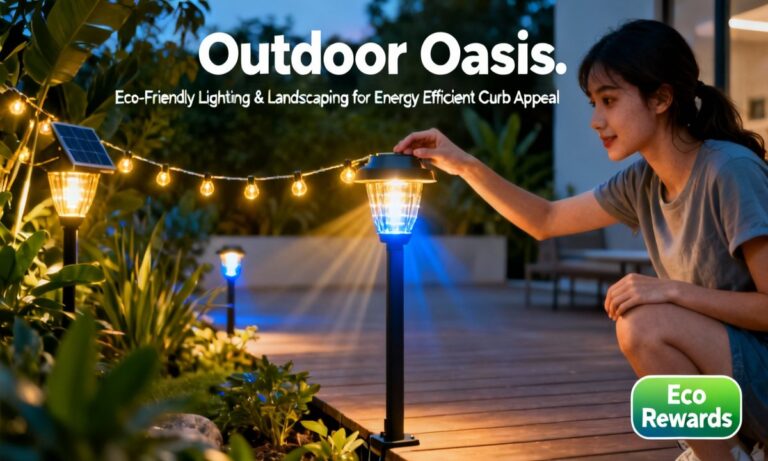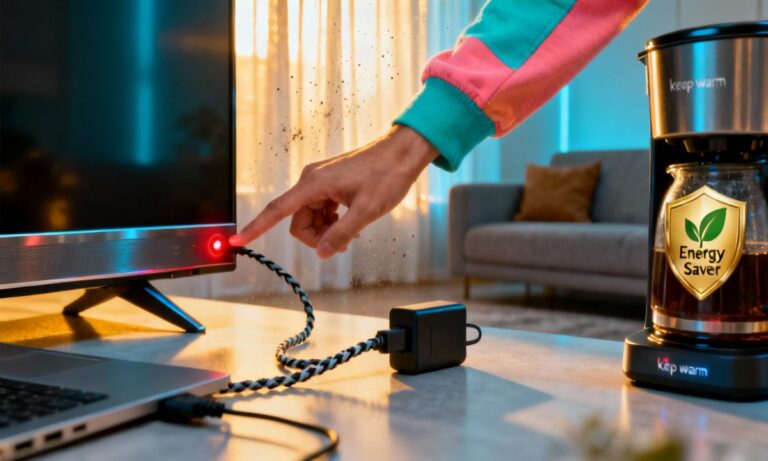Many homes experience significant energy loss through windows, with some estimates suggesting up to 30% of heating and cooling energy can escape. This means older or poorly insulated windows are often major contributors to energy waste. Investing in smart, well-insulated window solutions can enhance home comfort and substantially reduce utility expenses, benefiting both homeowners and renters.
Embracing energy-efficient windows is a key step towards greener living, offering immediate savings across the United States. Reports indicate that window leaks are a primary cause of high energy bills, prompting homeowners to seek effective solutions. By making thoughtful upgrades, you can significantly boost your home’s energy performance and contribute to a more sustainable future. You can learn more about energy efficiency solutions here.
Energy-Saving Smart Window Coverings
Beyond aesthetics, window coverings serve as powerful tools for enhancing home energy efficiency. Cellular shades, often known as honeycomb shades, are frequently lauded for their superior performance. Their unique air pocket design creates a robust barrier against heat transfer, boasting R-values from 2.0 to 5.0. Research confirms that properly installed cellular blinds can reduce heat loss by over 40%, potentially cutting heating costs by up to 10%. Explore more about efficient coverings here.
Several other smart window covering options also provide significant energy benefits. Insulated drapes, plantation shutters, and solar shades each offer unique advantages. Plantation shutters, for instance, can achieve an R-value close to 3.0, while solar and roller shades are excellent for reducing sun exposure and heat in warmer regions. To see how these upgrades integrate into a broader energy-saving strategy, consider learning about top smart home upgrades.
The Power of Smart and Automated Window Treatments
Home automation is transforming daily living, with window treatments now integral to this evolution. Smart window coverings, such as motorized blinds, can connect to your phone or operate on a preset schedule. They dynamically adjust based on sunlight, temperature, and even room occupancy. This intelligent responsiveness helps maximize energy savings around the clock, even when you are away or forget to manually adjust them.
A recent study found that automated insulating shades can cut overall energy consumption by up to 25%, with payback within just a few years. For more details on this research, you can refer to the Illinois Institute of Technology study. These smart blinds can be easily integrated into broader home automation systems, providing enhanced control.
Seamless integration allows control of your shades through popular smart home platforms like Alexa, Google Home, or Apple HomeKit, offering hands-free convenience and enhanced savings. Automated blinds overcome a frequent oversight: many households leave window coverings static, missing significant opportunities to optimize energy usage and reduce utility costs throughout the day. This dynamic management ensures consistent efficiency.
DIY Window Upgrades for Enhanced Efficiency
Achieving energy savings doesn’t require extensive investment; many DIY window upgrades offer immediate and significant returns. Simple, proven techniques can greatly enhance your window insulation, leading to noticeable reductions in heating and cooling expenses. Empower yourself to make a difference in your home’s energy performance with these accessible tips.
Consider installing insulated cellular shades or thermal curtains. These options are generally affordable, easy to hang, and can make a substantial difference in the thermal performance of any room throughout your home.
Apply reflective window film, especially on sun-exposed windows during warmer months. This simple application is excellent for reducing solar heat gain, helping to keep your interiors cooler and more comfortable without excessive air conditioning.
Utilize weatherstripping and caulking to seal any gaps around your window frames. This cost-effective method is highly effective in preventing unwanted drafts, which are a common source of energy loss during both hot and cold seasons.
Be mindful of your window covering habits. During winter nights, ensure all coverings are closed for added insulation. On hot summer days, keep them closed, especially on east and west-facing windows, to effectively block heat from entering your living spaces.
For additional hands-on inspiration and to tackle more energy-saving home improvements within a budget, you might explore various DIY home repair hacks. These guides offer practical advice to empower you with valuable skills for maintaining an efficient home.
Many of these upgrades are notably cost-effective, often costing less than $100 and requiring only basic tools for installation. Prioritize improvements on drafty or sun-exposed windows to achieve the most immediate impact. Remember, even simple behavioral habits, like timely adjustment of blinds, contribute significantly to overall energy savings.
Understanding the Return on Investment for Window Solutions
Considering the true value of window improvements is essential for budget planning. High-performing coverings, such as honeycomb shades or thermal curtains, can often yield a return on investment within one to two years, particularly in regions with fluctuating temperatures. While automated shades may involve a higher initial cost, energy savings typically allow them to recoup their expense within three to five years, according to research from the Illinois Institute of Technology.
For a personalized assessment of your home’s energy usage and potential savings, an in-depth home energy audit can be invaluable. This comprehensive analysis will pinpoint the most impactful upgrades tailored to your unique living space, ensuring you invest wisely for maximum efficiency and comfort.
Furthermore, numerous states provide rebates and incentives for installing energy-saving window treatments. It is always advisable to consult with your local utility providers or explore resources from the Department of Energy to discover current programs and eligibility criteria in your area. These incentives can further enhance your investment’s value.
Smart Living: Seamless Integration with Home Automation
Today’s smart homes extend far beyond basic thermostat control. Integrating smart window coverings with systems like smart thermostats creates a harmonious environment, enabling quicker comfort adjustments and enhanced savings. Visualize your home intelligently closing blinds when the air conditioning activates or opening them on sunny winter days to passively capture warmth.
To fully understand how these devices can coordinate for seamless efficiency, delve into a smart thermostat deep dive. If you are looking to future-proof your living space, our guide on advanced smart home energy efficiency offers expert insights and explores the latest technological advancements in integrated home management.
Smart window integration is no longer a futuristic concept, but a current reality for many homes. Convenient DIY kits are widely available, allowing you to automate your existing blinds at a fraction of the cost typically associated with full professional installation. This accessibility makes smart solutions achievable for a broader audience.
Optimizing with Behavioral Habits and Seasonal Timing
The strategic use of your window coverings, both how and when, significantly influences your home’s energy performance. During winter, open shades on sunny days to passively capture warmth, then close them at night to retain heat. Conversely, throughout hot summers, keep shades closed on east and west-facing windows during peak sun hours to minimize heat gain.
For an even deeper understanding of seasonal strategies to maximize the efficiency of your residential window solutions, consult our article on energy-proofing your home for winter. This resource provides additional tips to prepare your home for fluctuating temperatures throughout the year.
Frequently Asked Questions About Energy-Efficient Windows
Q: Are smart window coverings really worth the investment?
A: Yes, smart window coverings represent a worthwhile investment. Even non-automated insulating coverings can provide 10-20% savings on heating and cooling expenses. Automated smart blinds further enhance these benefits by intelligently addressing energy waste during periods you might not actively monitor, maximizing efficiency and comfort automatically.
Q: Can I install these upgrades myself?
A: Absolutely, many homeowners and renters can confidently install basic upgrades such as cellular shades, thermal curtains, and weatherstripping using minimal tools. For more advanced automation, accessible off-the-shelf kits are available, designed for compatibility with various existing smart home systems, making DIY smart integration achievable.
Q: What is the best window covering for energy efficiency?
A: For overall energy efficiency across diverse climates, insulated cellular shades generally stand out as the top performers. Plantation shutters and insulated drapes also offer significant benefits. When choosing, consider matching your investment to your specific sun exposure patterns and local temperature variations for optimal results.
Q: Do renters have upgrade options?
A: Yes, renters have many excellent upgrade options available. Most window coverings and DIY insulation solutions are designed to be temporary and non-damaging to rental properties. Prioritize easily removable options like cellular shades or thermal curtains, which offer substantial energy savings without permanent alterations.
For more comprehensive savings tips and answers to frequently asked questions, consider exploring a range of energy-saving home improvement ideas that can further enhance your home’s efficiency profile.
Local Resources and Professional Support
Locating appropriate solutions and qualified professionals in your area can be a straightforward process. You can search for certified window contractors using a Department of Energy locator tool. Additionally, inquire with local utility providers about any state-specific rebates or product incentives that might be available to you.
To further your energy-saving journey, explore our comprehensive guides on sustainable home products and budget-friendly DIY decor ideas. For individuals considering more significant advancements, investigating residential renewable energy options can lead to an even greener and more efficient living space. Embrace a holistic approach to sustainability.
Empowering Your Home’s Energy Future
Smart window coverings and accessible DIY upgrades present immediate, practical avenues to reduce energy costs and minimize carbon footprints throughout the United States. Regardless of whether you opt for advanced technological solutions or prefer simpler insulation strategies, your financial well-being and environmental impact will both benefit significantly from these thoughtful choices.
For detailed DIY step-by-step guides or to share your own valuable tips and experiences, we invite you to join the discussion in the comment section below. You can also receive a free home energy checklist by signing up for our newsletter. Your personal journey towards a greener, more efficient home truly begins with optimizing your windows.
For a deeper exploration into optimizing your home’s energy, consider other recommended resources. Discover how to slash your electric bill with top smart home upgrades or learn essential skills with our DIY home repair hacks for maintenance savings. Begin your journey to a more efficient home today.
